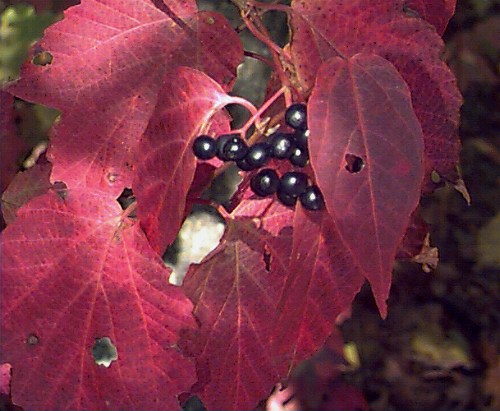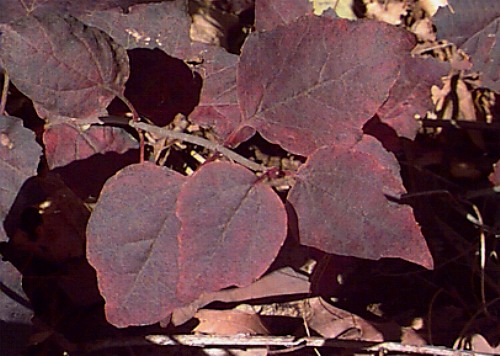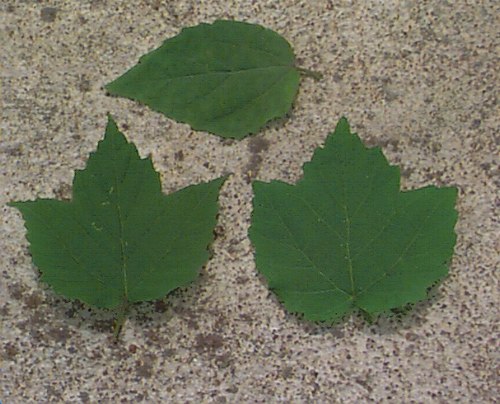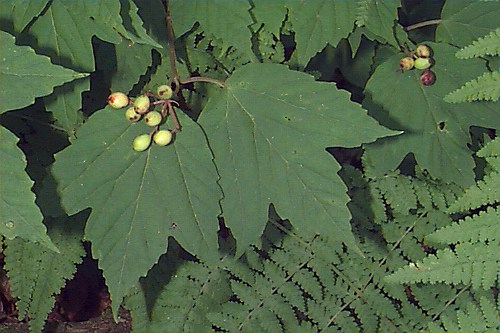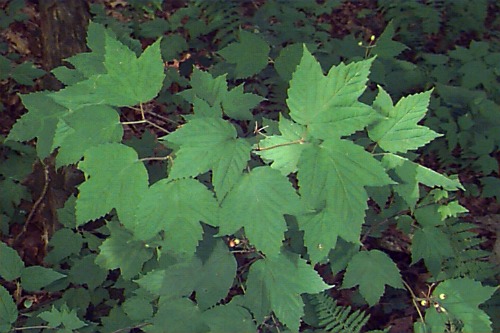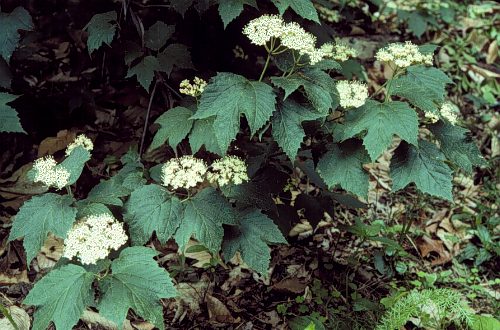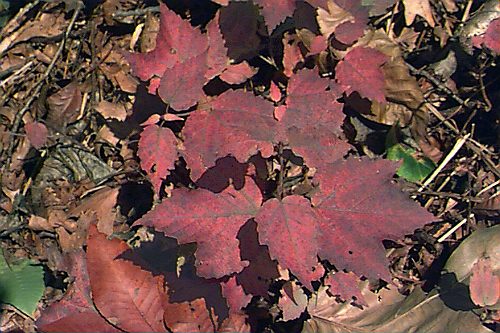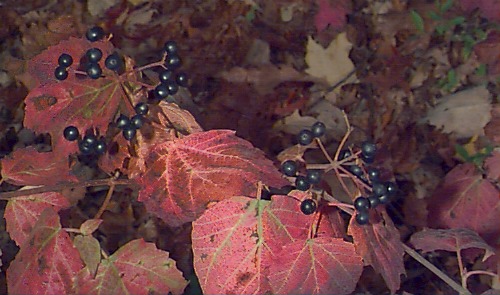Viburnum acerifolium
Mapleleaf Viburnum, Dogmackie
Caprifoliaceae
ExpandHabitat
- native to eastern United States
- hardy to zone 4
Habit and Form
- a deciduous small shrub
- multistemmed
- 4' to 6' tall with an equal width
- upright erect form
- suckers
- medium texture
- moderate growth rate
Summer Foliage
- opposite leaf arrangement
- simple, deciduous leave
- ovate leaf shape
- 3-lobed leaves
- 2" to 4" long
- dentate leaf margins
- somewhat pubescent
- dark green leaf color
Autumn Foliage
- reddish-purple fall color
Flowers
- yellowish-white flowers
- 1" to 3" cyme
- terminal
- blooms in June
Fruit
- black fruit, drupe
- egg-shaped
- 0.33" in diameter
- ripens in September
- persists
Bark
- pubescent, brown stems
Culture
- prefers well-drained, mildly acidic soil
- full sun to shade
- flowers on new wood
- buy plants on their own rootstocks to avoid sucking
Landscape Use
- shrub borders
- naturalizing
- mass plantings
- for fruiting effect
Liabilities
- bacterial leaf spot
- nematodes
- rootstocks tend to sucker
ID Features
- small, black, egg-shaped drupe
- deciduous leaves in an opposite arrangement
- lobed leaves with dentate leaf margins
Propagation
- by cuttings
- by seed
- by grafting
Cultivars/Varieties
- none
